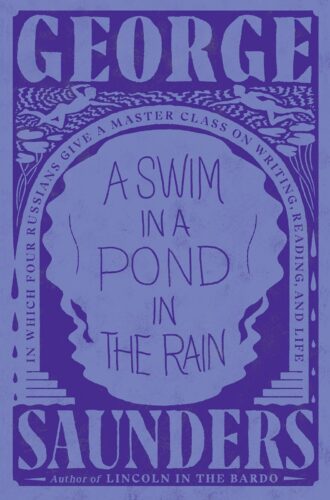CRAFT CLASSICS is Born
One of the high points in my life was hearing novelist and poet Denis Johnson read his work and answer questions about writing. I remember when an audience member was in the middle of asking a question and Johnson interrupted to say, “… well, when I was reading through one of my favorite craft books the other day….”
The audience member interrupted back. “Wait. You’re Denis Johnson! You’ve written over thirty novels—You’re still reading craft books?”
Johnson, with what felt like a particularly gentle kindness to the questioner, and to all of us in the audience who were thinking the same thing, said something to the effect of, “Yeah, I always work with craft books. They help so much….”
Johnson might have also said something about how writers work with craft books like a pianist practices scales, but it’s possible my brain is adding that in to round out this story. The main takeaway is that craft books ARE important to our process as writers. As a writing coach, I’m always suggesting a million craft books to my clients in my enthusiastic desire to help. So, I thought it would be cool to write this column for LAWG spotlighting my favorite craft books. May this ongoing column enrich your writing and bring you joy.
Swimming with The Masters
For our first swim together into the world of CRAFT CLASSICS, I strongly suggest you read America’s beloved short story writer (and novelist too!) George Saunders’s recent classic on craft: A Swim in a Pond in the Rain: In Which Four Russians Give a Master Class on Writing, Reading, and Life.
For decades, through his course on the Russian Short Story in Translation, Saunders has been teaching a select group of MFA students at Syracuse University how to read and think like writers. Now, in A Swim in a Pond in The Rain, Saunders welcomes us all into his classroom. There, he takes us on a journey through seven classics by Anton Chekhov, Ivan Turgenev, Leo Tolstoy, and Nikolai Gogol. On this voyage, he helps us understand what makes something that is “…not yet a story into a great story.”
As we travel with Saunders through these expert Russian short stories, we learn how to read in a deeper way. In our reading we study what the writers were doing, what questions they were asking, why they might not have ended a story earlier, and why they took a story in one direction instead of another. All the while, Saunders demystifies literary terms that can scare a writer into a serious bout of writer’s block.
Demystifying Placeholders
For example, in taking us on an “A Page at a Time” trip through Chekhov’s story, “In The Cart,” Saunders offers comfort when he says, “When we talk about fiction, we tend to use terms like, ‘theme,’ ‘plot,’ ‘character development,’ and ‘structure.’ I’ve never, as a writer, found these very useful.”
Reading that, I felt sudden relief—even though I use these terms when thinking about my own writing or working with my clients, I admit that deep down, I often wonder if I know what I’m talking about when using literary terms like “plot” or “theme.” Saunders also says that he doesn’t like the term “plot” and prefers “meaningful action.” To me, as a writing coach, that feels like a fresh cool breeze clearing the sky of clouds. MEANINGFUL ACTION–What clarity!

Saunders continues, “…. ‘Your theme’s no good’ gives me nothing to work with, and neither does ‘You might want to make your plot better….’” Saunders views these literary terms as placeholders and suggests we “…put them aside and try to find a more useful way to think about whatever it is they’re placeholding for.”
Saunders also looks at the idea of “…the scary term ‘structure’.” Even though I’ve worked with many writers on creating good structure for their story idea, the term gives me the heebie jeebies. Saunders helps us so much when he says, “We might think of structure as simply: an organizational scheme that allows the story to answer a question it has caused its readers to ask.” Saunders sees structure as “…a form of call-and-response…” where “[a] question arises organically from the story and then the story, very considerately, answers it.”
Then Saunders shows us in an example from “In The Cart” how Chekhov does this as we read about Marya feeling trapped as a schoolmistress in a two-bit town. Saunders demonstrates his own thinking process as he reads: “Me, at the end of the first page: ‘Poor Marya, I already sort of care about her. How did she get here?’’’ Saunders goes on, “Story (replies), in the first paragraph of its second page: ‘Well, she had some bad luck…’”
Through Saunders we learn that this movement from question to answer to the next question and answer ‘til we get to the end of this story – this “call and response” dialogue between writer and story – is what gives the story its organic structure. To me, “call and response” is a revelation. “Structure” will never scare me again. (Well, maybe sometimes it’ll scare me, but not as much as before).
“Meaningful action” instead of “plot”; “call and response” instead of “structure” – these are just two of the many literary terms Saunders demystifies for us.
A Swim in a Pond in The Rain is a perfect companion for all writers and for readers too. I love using this book with my clients and engaging with it for my own writing as well. And you know, I sense that if the great Denis Johnson had lived to see it published, he would have added Saunders’s book to his collection of favorite books on craft.
Try This at Home
Saunders offers fantastic exercises throughout his masterful book, and I won’t spoil their effect by giving them to you now. I recommend that you experience them for the first time within the flow of Saunders’ storytelling. But here is an exercise I created for you right now inspired by poor Marya’s experience from Chekhov’s story. Enjoy!
- If you write fiction: Think about bad luck. Then write a scene showing us a character of your choice experiencing bad luck right at that moment. Then write a second scene about that same character many years later and what their life is like now.
- If you write memoir: Think about bad luck. Then write a scene about an experience of bad luck you yourself had many years ago. Then write a second scene showing us the effect that bad luck has had on your life years later.
- If you write general nonfiction: Think about bad luck. Then choose a historical figure and write a scene about an instance of bad luck in that person’s life. Then write a second scene set years later showing the effect that bad luck had on that historical person’s life.
Resources
For more about LAWG workshops and coaching:
For more about George Saunders:
For more about Denis Johnson:
Poetry Foundation: Denis Johnson
For more about Anton Chekhov:
The Vast Humanity of Anton Chekhov
For more about Ivan Turgenev:
Liberals, Radicals, and the Making of a Literary Masterpiece
For more about Leo Tolstoy:
For more about Nikolai Gogol:


You must be logged in to post a comment Login